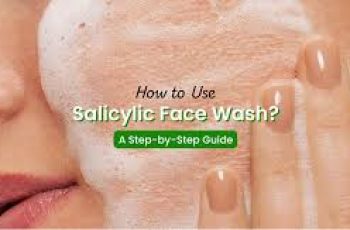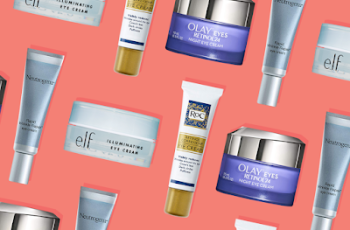
Skin Cycling and Products: How to Skincycle Your Skincare Routine
Skin cycling, or rotating products in your skincare routine, has become a popular skincare trend recently, thanks in large part to Dr. Whitney Bowe’s promotion of the concept on TikTok. But what exactly is skin cycling and is it really beneficial for your skin health? As a dermatologist, let me walk you through the details.
What is Skin Cycling?
The idea behind skin cycling is that you rotate your skincare products in a structured regimen so you are not using the same products every day. The goal is to maximize both the effectiveness of your products as well as the health of your skin by giving your skin time to “reset” between products. This helps avoid problems such as overexfoliation and retinoid side effects. Each dermatologist has their own way of doing this with their patients.
Dr. Whitney Bowe’s Cycling Plan
Although dermatologist’s have been cycling skincare products for years, Dr. Bowes coined the term skin cycling. Her system is a way of cycling products over 4 nights with these cycles:
Exfoliation
Retinol
Recovery
Treatment
Her cycling advice is only for the night time regimen. This approach can work well if you are beginning a retinol for the first time and have a resistant skin type. The problem with this approach is it is not consistent enough and it is not right for all skin types and skin concerns. For example, this is not a good approach to treat acne, melasma, rosacea or skin inflammation.
.
In this blog, I am going to tell you how I design a custom skin cycling skincare routine for my patients based on their Baumann Skin Type.
16 Bauman Skin Types
If you take the skincare routine quiz, I can tell you what your daily skincare routine should be and help you find the best medical grade skincare brands that are right for you. Once you know your skin type, you will be able to shop by your skin type to find the skin cycling products that are right for you.
Take the Quiz
How Dermatologists Skin Cycle
When dermatologists are prescribing a custom skincare routine for their patients and a skin cycling plan there are two approaches:
Customize the regimen based on a skin diagnosis such as acne, rosacea, melasma, or skin aging
Personalize the routine based on the Baumann Skin Type
Over 280 doctors in the USA and more around the world use the Baumann Skin Type as the basis for skincare regimen design. (1-12)
Once the skin type is diagnosed, software that has been developed by dermatologists over the last 2 decades is used to generate the optimal skincare routine template. The regimen template is then populated by products that meet the criteria for inclusion into that step of the regimen specific to that skin type. The instructions you get on how to cycle products are specific to you skin type.
best skin cycling routine
Best Skin Cycling Routine
In your routine, there are some products that need to be used consistently every day to get results, while other products should be cycled. I will go through the morning and night steps and discuss which products can or should be recycled.
Morning Skin Cycling Routine
At a minimum your morning skincare routine should have a sunscreen. This can be a moisturizer with sunscreen or an active therapeutic sunscreen. This is true for all 16 Baumann Skin Types.
Step 1 AM Routine
Your am cleanser can be cycled. If you are using a low pH cleanser in the morning, this exfoliates the skin. You can skip this cleanser on days you are using other exfoliating products, starting a new retinoid, or when your skin is in recovery. You can use your evening cleanser instead. This is one of the many reasons you need 2 different cleansers in your skincare routine.
Step 2 AM Routine
The eye cream you choose should match your eye issues.If you use it in the am and need to cycle will depend on the type of eye cream. Don’t use eye creams with hydroxy acids or retinol if you are using other products in your regimen with these ingredients in them.
Step 3 AM Routine
This is the regimen step that you should cycle skincare products. Which products to use depends on your skin type- but i will give you an example. Vitamin C, exosomes, and growth factors are used to treat aging skin, but Vitamin C serums are a low pH and can lower the effectiveness of the other two types of products. So you cannot use them at the same time of day and you may need to use several types of antiaging serums that are incompatible with each other. This is when you cycle. Read below to learn how to cycle individual product types or ingredients.
Step 4 AM Routine
This is your moisturizer step. Dry skin types should not cycle this step. If you have dry skin, find the best type of moisturizer for your skin type and stick with it and use it every day. Oily skin types can cycle moisturizers with serums.
Why does this matter?
Dry types need a daily barrier repair moisturizer- a real one that has the maltese cross pattern.
Oily skin types need a lightweight noncomedogenic moisturizer on dry days but may not need a moisturizer on humid days. This is the step that oily skin types can use hyaluronic acid serums if they are right for your skin type.
Step 5 AM Routine
Never skip your sunscreen step. Even if you skip everything else and do not wash your face- you still need SPF!
night skin cycling routine
Night Skin Cycling Routine
In your night time routine you will mainly cycle step 3 and your retinol step which may be step 3, 4 or 5 depending on your Baumann Skin Type.
Step 1 PM Routine
You do not need to cycle your night cleanser. Choose a cleanser that removes sunscreen, dirt, oil, and makeup for your night skincare routine. If you have oily skin- a foaming cleanser works well and can be used every night.
If you have dry skin, choose a cleansing oil or a creamy cleanser. Do not use your low pH cleanser at night unless you have been told to by your dermatologist to avoid overexfoliation.
Step 2 PM Routine
You can cycle your night eye cream depending on what eye issues you have that night. There are different night eye creams for these issues:
dark circles
dryness
eye skin sensitivity, irritation, inflammation
fine lines and wrinkles
puffy eyes
Step 3 PM Routine
This is the step that you will skin cycle products. Which products to choose depends on which skin concerns you are treating. You can read more about the barriers to skin health and what all you should be treating in this skincare routine step.
Step 4 PM Routine
In most skin types who are beginning a new skincare routine, this is the moisturizer step. You should choose your moisturizer based on which of the 16 Bauman Skin Types you are. You may want to cycle this step if you are using moisturizers with exfoliators like:
hydroxyacids
Vitamin C
retinoids
In most case you do not need to cycle the products n this step but you may need to cycle when this step happens. For example, once you get acclimated to retinoids, you may use them in this step of the routine instead.
Step 5 PM Routine
This is the step that retinol goes in when you are a beginner. You will cycle this step until you can tolerate the retinoid every night.
This blog explains how to use retinoids.
You can alternate retinol, tretinoin, tazarotene or adapalene with one of these antiaging retinoid alternatives.
[[T01]]
skin cycling products
Skin Cycling Products
How to skin cycle depends upon the product type. Below I discuss each product type that in some cases should be used according to skin cycling rules.
Exfoliants
If you over use exfoliants in your skin care routines you can get redness, irritation, acne breakouts, eczema, dry skin, and hyperpigmentation. This is why exfoliants should be cycled in most skin types.
Examples of types of exfoliants are:
Acids except hyaluronic acid
Face Brushes
Hydroxyacids
Loofas
Peels
Retinoids
Textured towels
Scrubs
retinoids
Retinoids
Retinoids like retinol, tretinoin, adapalene, tazarotene and trifarotene are the products in your skin care routine that are the most important to cycle to avoid side effects.
Read this blog on how to cycle retinoids in your nightly skincare routine.
Read this blog if you had a reaction to retinoids and want to know how to add them back into your routine cycle.
vitamin c
Vitamin C
You may not have enough steps in your routine for Vitamin C, but your skin cannot make collagen without it and you need more than you can get with diet and supplements. You can cycle it into your routine this way:
Apply a Vitamin C serum after washing your face in the am with a low pH cleanser. Let it stay on at least an hour. Then you can shower and afterwards apply your normal am regimen. This way your Vitamin C serum has a chance to penetrate into the skin without being diluted by any other products.
Substitute the Step 3 of your am routine with Vitamin C serum 3 times a week.
It is better to cycle Vitamin C this way then applying it with other antiaging serums because they will just dilute each other. Also the low pH of Vitamin C can inactivate exosomes and growth factors.
Skin cycling is very confusing. The easiest way to do it is take the skincare routine quiz. Then you will receive a dermatologist-recommended custom skincare routine for your Baumann Skin Type. Check your emails for advice on how to cycle products. On day 30, 60 and 90 you will receive personalized advice on how to cycle products and add new ones to your routine. We will guide you. You can also visit our youtube channel and social media and skincare blogs for more advice on how to cycle products in your skincare routine.


